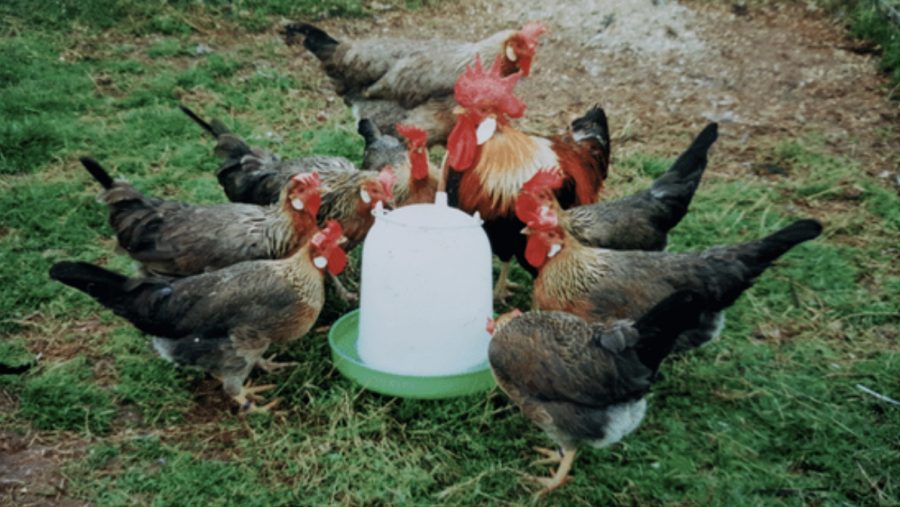In this article extract taken from Practical Poultry in the April issue of The Country Smallholder magazine, Grant Brereton weighs up the benefits of three quite engaging methods of poultry breeding…
This year many breeders of pure varieties of poultry are having a ‘year out’ or certainly breeding much less than usual; just a small number to keep the precious bloodlines going. It is a very sad situation, as the bird flu continues to loom over us. As a result, many people [involved in the showing side of the hobby] fear that demand for surplus stock will be much lower, and don’t relish the idea of being overstocked in the coming months.I am one such breeder, who is also affording the family garden an opportunity to have a rest – as the weather really did for the grass last year.
However, in order that it’s not a wasted year, I have offered hatching eggs from all my pens to prospective keepers. This has proved popular, and when I realised that many people can hatch more than I could personally, it feels good to think that these precious old lines are spread about a bit. Maybe that’s a little chink of positivity in these times. An overlooked hinderance to breeders nowadays is undoubtedly their available facilities, which, in many cases, have been utilised to comply with the government bird flu regulations, making space now a premium on their property. Through enforced measures, rearing sheds or indoor breeding pens might now be where the main flock resides.
COST OF LIVING CRISIS AND POULTRY BREEDING
Of course, bird flu isn’t the only consideration these days. The cost of living crisis has made many people think about future short-term breeding plans. Poultry feed has increased exponentially in price in recent times, particularly breeders pellets, which in some instances are pushing £20per 20 kilo bag. This has ‘priced many of us out,’ unfortunately, despite empathising that the feed companies and retailers have no other option.
So now, more than ever, breeding plans need to be properly-thought-through. You might not even keep pure breeds and just fancy hatching a few of your own chickens.In which case it is definitely worth planning for what you’ll do with the offspring. As anyone will tell you, pullets are always desirable but cockerels not so much; particularly crossbred examples. It still amazes me how many people believe that nature will give us only one or two cockerels in our hatches, the rest being pullets.
Sadly, it just doesn’t work that way, and quite often the balance tips unfavourably. I’ll give you an example: in 2021 I hatched 30 Light Sussex bantams, 23 of which were male! When it comes to breeding, there are many different options, but I’ve outlined three approaches below, which will hopefully be ‘food for thought’ for when you come to putting together your breeding pens.
HIT & HOPE
This heading could appear derogatory but isn’t meant as so. No particular method of breeding guarantees quality offspring.There is always an element of ‘hope’ whatever approach you use. I look back on my early days of breeding, and some of the best and most exciting hatches were always the ‘unknowns’ because the parents were either crossbreds or two different pure breeds. And it has to be said, some of the sweetest, most nurturing hens I ever produced were crossbreds.
As you may be familiar with, when we first get into pure breeds, there’s a fear that sets in almost immediately about the consequences of ‘inbreeding.’ We believe it to be malpractice and irresponsible; it’s almost a dirty word. But there’s a whole world of difference between inbreeding and ‘inbreeding depression.’ Nevertheless, after a year or so of breeding from the trio we acquired, we seek out ‘fresh blood’ oran ‘outcross’ and quite often without really having a logical explanation as to why -only that we’re doing the right thing.This is plausible, because who wouldn’t think that breeding from ‘unrelated’ stock was responsible?
However, the major downside to using an outcross is that it can undo many years of hard work and selection by past breeders. You may have a wonderful strain without actually knowing it. I recall a breeder of Cuckoo Marans being in a rush to seek an outcross for breeding. Nothing was really wrong – he was still producing many healthy chicks from dark brown eggs, but was caught up(as can happen) in this notion that you have to breed from unrelated stock. So he brought in a male that he acquired at auction and used it in the breeding pens…
This article extract was taken from the April edition of The Country Smallholder. To read the article in full you can buy the issue here.
To receive regular copies of The Country Smallholder magazine featuring more articles like this, subscribe here.
For FREE updates from the world of smallholding, sign up for The Country Smallholder newsletter here.








